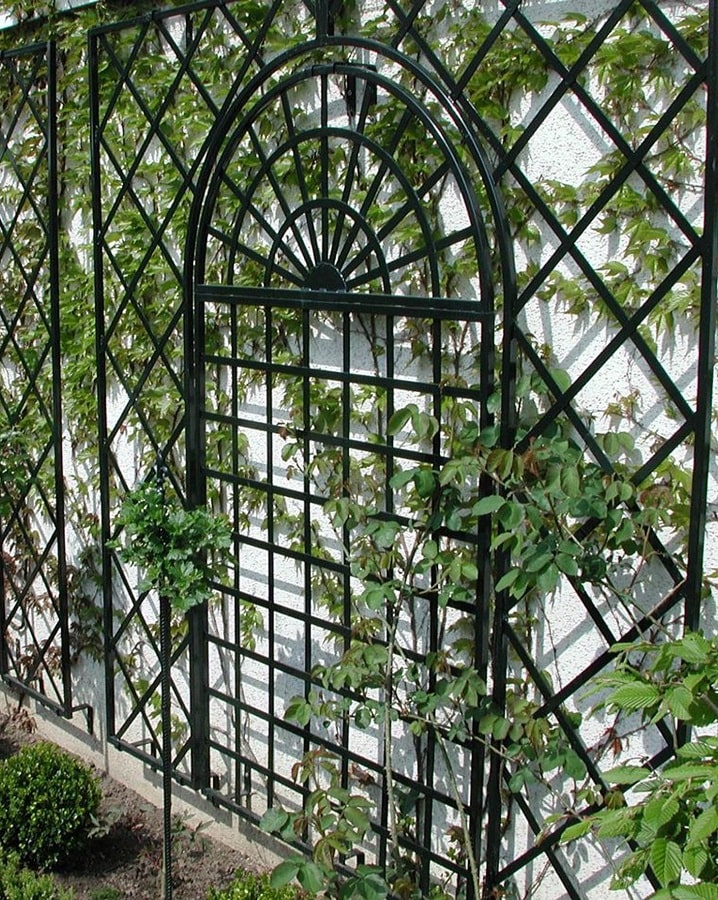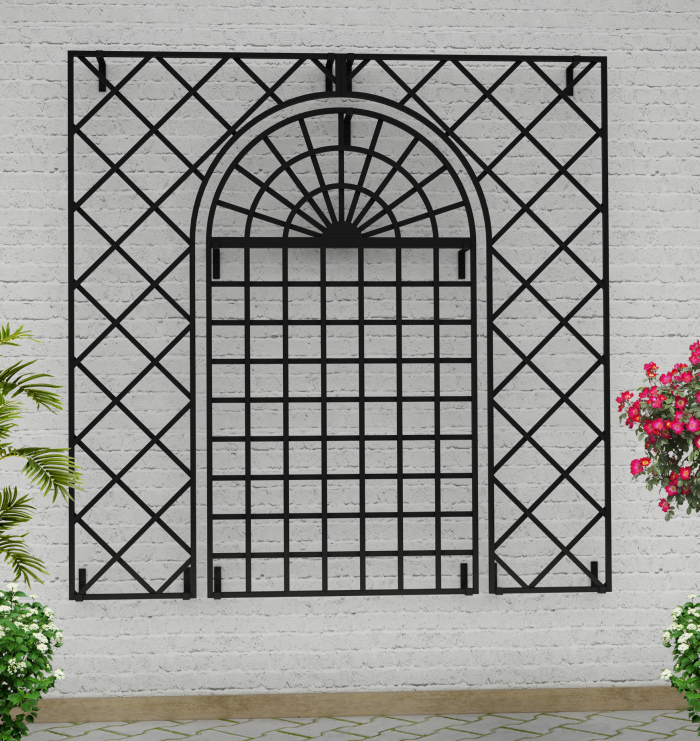Treillage Metal Wall Trellis
The R9-3, R9-4 and R9-5 metal wall trellises are made of 0.79” (2 cm) steel profile tubing. The latticework is made from 0.79” (2 cm) steel band. Hot-dip galvanised and powder coated in black. Attachment hooks provided for a recommanded wall-trellis distance of 3.94” (10 cm). Not included are wall plugs and screws. Other colours on request. 10 years guarantee against rust. The R9-3 is available only in packs of two.
In black, the standard colour, this metal wall trellis visually stands out from the façade behind. In a custom colour of your choice, it will fit in seamlessly with the colour scheme of your property or garden.
Description
Variable Wrought Iron Trellis for Roses and Clematis
While the word treillage, which is originally French, can be traced back to the 16th century, the object itself is of much older provenance. The murals of ancient Rome and Pompeii attest to the presence of treillages trellises in the gardens of classical times. Rediscovered during the Renaissance, they were continuously refined in the Baroque period, becoming a regular feature in French gardens. Their attractive wooden latticework with diamond-shaped or right-angled spaces was framed in arches or gables, and crowned with balls of wood turned on the lathe. Sometimes the latticework slats were arranged to create a false perspective, the illusion of a third dimension (trompe l’oeil). In our time, treillages are prized by architects working on the exterior of buildings. With a good complementary colour, the clear outline of the fine metal latticework and the attractive shadows it casts on a wall, give structure and depth to a dull, windowless façade. With or without vegetation, the treillage can greatly enhance the appearance of an otherwise featureless surface.
From Viticulture to Garden Architecture
At one time, in vineyards, fairly simple trellises were used as supports for grapevines. Later they were adapted by gardeners to train espaliers and climbers. Eventually it was the celebrated garden architect André Le Nôtre and his contemporary, Jules Hardouin-Mansart, the court architect of Louis XIV, who introduced treillages into France’s royal parks and gardens. Together, these two visionaries transformed the practical wooden or metal espalier frames, turning them into key stylistic elements in the art of garden design. They were now used to decorate arcades and labyrinths, to construct imposing pavilions, and – attached to walls – to create trompe l’oeil illusions of three-dimensional space. Today Classic Garden Element is rousing these gems of Baroque garden art from their slumber, and reviving the splendour of a bygone era in contemporary private gardens. Why not use our Treillage Wall Trellis to give your garden an aura of tranquil elegance!























